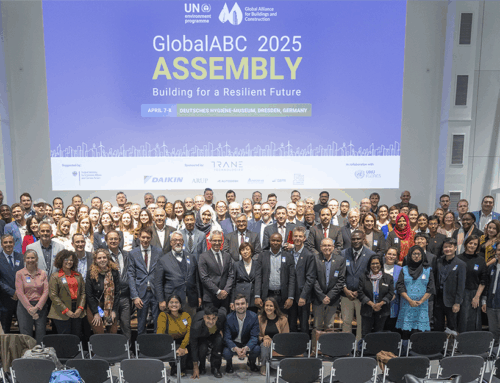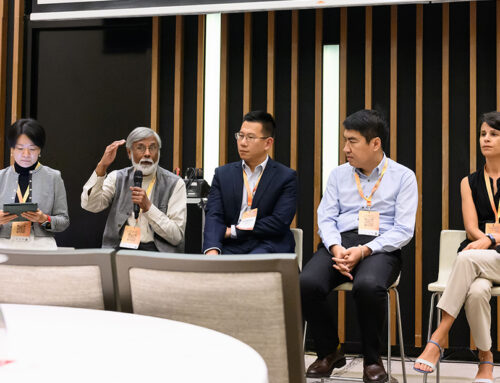The transition to a net positive economy is a critical and complex challenge, requiring more than superficial measures. According to John Holm, Senior Vice President, Pyxera Global, it’s about building systems that regenerate and restore our natural resources within the framework of our planetary boundaries.
“We need policies and incentives to transition to net positive businesses. Only then can we achieve true regeneration of the planet’s resources, not just incremental or superficial efforts,” Mr Holm said.
A key element in this transition is understanding how the circular economy works and its impact on a net positive economy.
“The circular economy is often misunderstood as being solely about packaging and recycling, but that’s not accurate. We view the circular economy holistically, transforming business practices to support an equitable and just transition by incentivizing and subsidizing reduce, reuse, repurpose activities.”
This transition aims to ensure that the benefits of a more sustainable and regenerative economy are shared across all segments of society, particularly those who are historically marginalized or disproportionately affected by environmental degradation and economic inequalities.
John Holm spearheads Pyxera Global’s inclusive circular economy initiatives. His work focuses on designing and implementing equitable circular cities, developing reverse logistics hubs for sustainable materials, providing corporate sustainability advisory services, and advancing zero–waste community programs with a strong emphasis on plastic reduction.
How do we effectively use circularity for a just transition?
The first step in embracing circularity is understanding its meaning.
“The circular economy’s focus should prioritize reduce, reuse, and repurpose initiatives first, with recycling as the last resort. Essentially, we need to design out waste from inception,” Mr Holm said.
“It is important to frame circularity as restoring the planet’s resources and limiting our take-make-wake consumption behaviors.”
Creating effective policies and procurement pathways is crucial for enabling systems that support this transition. The private sector, particularly in supply chains, must be viewed through the lens of climate impact.
“Climate change will affect your business whether you acknowledge it or not, so why not get ahead of it now? This requires businesses to take proactive measures and leverage existing solutions to facilitate the transition. And consider new innovations such as urban mining and material take-back hubs.”
To help enable a circular transition, partnership is key. In this work, coalitions play a pivotal role in driving transformative change. However, not all coalitions are equally effective.
“It’s important to identify like-minded allies who are committed to working together. Effective coalitions are grounded in a clear theory of change, which each partner should actively support.
This calls for a selective approach to partnerships, focusing on those genuinely committed to advancing the transition with a common theory of change.”
Communities as key stakeholders
Community involvement is essential in driving sustainable change. As John Holm highlights,
“Communities are often at the frontline of challenges like climate change, food loss, and health crises. But they are also the frontline of hope and solutions. They face these issues daily and have developed their own ways to mitigate them.”
Rather than imposing interventions on communities, it’s important to engage and invest with them as key stakeholders.
“You don’t impose solutions on a community; you ask the community. Communities already hold the solutions to the problems we face. Organizations working toward a just transition must act as a bridge, translating community needs into strategies that influence decision-making at higher levels. Our role is to bring their voices to the table, enabling them to define the agency and solutions that they want for their lives and livelihoods.”
The power of networks and cross-sector collaboration
Networks are vital for creating transformative change, but they must be built on shared goals and purpose. Mr Holm cites the Circular City Coalition and the Systemic Climate Action Collaborative as examples of successful networks.
“These networks consist of multiple organizations working together, sharing resources, and holding each other accountable. The key is to establish a common alignment and a shared theory of change. We need to create adaptable networks that anyone with a similar mindset can join because time is running out. Collaboration, not competition, is the way forward.”
Mr Holm stresses that successful networks are driven by the people within them, ensuring accountability and mutual support.
Translating across sectors, however, presents another challenge. It requires understanding the specific needs and goals of different stakeholders while finding common ground.
“You have to have alignment in common goals, and it’s important to assume good intent. Ask, ‘What is the common purpose? How can we learn and understand together?’ Meeting people where they are fosters dialogue and collaboration, bridging gaps and driving collective action.”
Mr Holm illustrates this with a project in Alaska that exemplifies working across sectors with community and networks.
“We started a project in Alaska five years ago with the vision of creating zero-waste communities. Our approach was to engage community stakeholders directly, understanding their needs, and letting them lead the way. We collaborated with partners like Metabolic and Work (via the First Mile initiative), who shared our commitment and values.
Alaska’s coastal communities face a unique challenge with plastic waste, largely due to gyres depositing debris on indigenous lands, coupled with the absence of a waste management system. In response, we co-created the ‘One Alaska’ solution. This initiative transforms plastic waste from the community and municipalities into feedstock for plastic alternatives. By sequestering plastics 1-9 and converting them into concrete aggregate, we’ve found a sustainable way to build with reduced environmental impact.
This solution not only addresses waste but also creates jobs for Indigenous communities. It’s a powerful example of coalition building, where unlikely allies come together to create meaningful solutions.”
Finding hope in a sustainable future
Mr Holm believes that amidst the challenges, there is always hope. The journey toward a circular economy is not just about overcoming obstacles; it’s also about celebrating successes and fostering optimism.
“There’s a lot of beauty in this work. When you get out and work with some of these communities, you see so much good happening.
“If we are to truly transition to a sustainable future, it must be through the lens of finding the good and leaning into it, rather than being overwhelmed by the bad. While it’s easy to be daunted by the challenges and skewed power dynamics we face, we must focus on the aspiration of transition, not the fear of it. Step by step, day by day, we move forward.”
Share This Story, Choose Your Platform!
Stay in touch with how we’re transforming the buildings sector
GBPN runs innovative building policy reform programs in key regions around the world that aim to tackle the climate emergency by decarbonising the buildings sector. Stay up to date with our newsletter.
Stay in touch with how we’re transforming the buildings sector
GBPN runs innovative building policy reform programs in key regions around the world that aim to tackle the climate emergency by decarbonising the buildings sector. Stay up to date with our newsletter.







